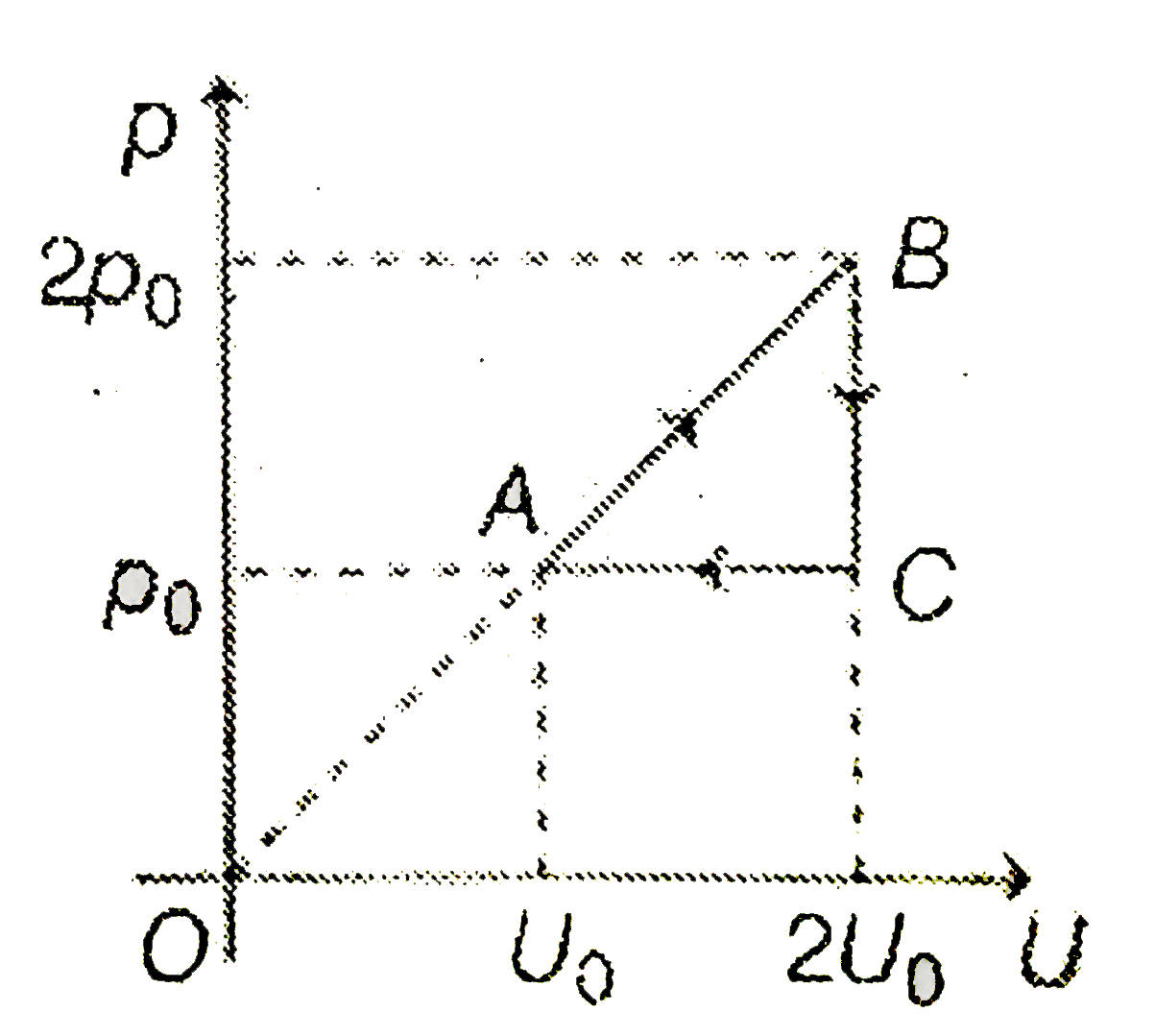A monoatomic gas undergoes a process given by 2dU+3dW=0, then what is the process
isobaric
adiabatic
isothermal
None of these
The correct Answer is:D
To determine the type of process a monoatomic gas undergoes given the relation 2dU+3dW=0, we can analyze the equation step by step.
Step 1: Understand the given equation
The equation 2dU+3dW=0 can be rearranged to express the relationship between the change in internal energy (dU) and the work done (dW):
2dU=−3dW
This implies:
dU=−32dW
Step 2: Relate internal energy change to work done
In thermodynamics, for a monoatomic ideal gas, the change in internal energy (dU) is related to the temperature change (dT) by the equation:
dU=32nRdT
where n is the number of moles and R is the universal gas constant.
Step 3: Substitute dU in terms of dW
From the rearranged equation dU=−32dW, we can substitute for dU:
−32dW=32nRdT
This leads to:
dW=−nRdT
Step 4: Analyze the implications of dW=−nRdT
The negative sign indicates that the work done by the gas is negative, which typically means that the gas is doing work on the surroundings (expansion). However, since the change in internal energy is also related to the temperature change, we can conclude that as the gas does work, its internal energy decreases, which suggests that the process is not isothermal (where dU=0).
Step 5: Identify the type of process
The relationship dU=−32dW indicates that the internal energy decreases as work is done. This behavior is characteristic of an adiabatic process, where there is no heat exchange with the surroundings, and the internal energy change is entirely due to work done.
Conclusion
Thus, the process described by the equation 2dU+3dW=0 is an adiabatic process.
---
The equation 2dU+3dW=0 can be rearranged to express the relationship between the change in internal energy (dU) and the work done (dW):
2dU=−3dW
This implies:
dU=−32dW
In thermodynamics, for a monoatomic ideal gas, the change in internal energy (dU) is related to the temperature change (dT) by the equation:
dU=32nRdT
where n is the number of moles and R is the universal gas constant.
From the rearranged equation dU=−32dW, we can substitute for dU:
−32dW=32nRdT
This leads to:
dW=−nRdT
The negative sign indicates that the work done by the gas is negative, which typically means that the gas is doing work on the surroundings (expansion). However, since the change in internal energy is also related to the temperature change, we can conclude that as the gas does work, its internal energy decreases, which suggests that the process is not isothermal (where dU=0).
The relationship dU=−32dW indicates that the internal energy decreases as work is done. This behavior is characteristic of an adiabatic process, where there is no heat exchange with the surroundings, and the internal energy change is entirely due to work done.
Thus, the process described by the equation 2dU+3dW=0 is an adiabatic process.
Topper's Solved these Questions
Similar Questions
A certain amount of ideal monoatomic gas undergoes a process given by TV1/2= constant. The molar specific heat of the gas for the process will be given by
View SolutionA monoatomic gas undergoes a process in which the pressure (P) and the volume (V) of the gas are related as PV−3=constant. What will be the molar heat capacity of gas for this process?
View SolutionA monatomic ideal gas undergoes the shown cyclic process in which path of the process 2→3 is a semicircle. If 2mol of gas is taken, find

Heat given to the system in semicircular process
View SolutionA monatomic ideal gas undergoes the shown cyclic process in which path of the process 2→3 is a semicircle. If 2mol of gas is taken, find

Total heat rejected in one cycle
View SolutionAn ideal monoatomic gas undergoes a process in which its internal energy U and density ρ vary as Uρ= constant. The ratio of change in internal energy and the work done by the gas is
View SolutionAn ideal monoatomic gas undergoes a process in which its internal energy U and density ρ vary as Uρ= constant. The ratio of change in internal energy and the work done by the gas is
View Solution2 moles of an ideal monoatomic gas undergoes a cyclic process ABCA as shown in the figure. R is the univers l gas constant. (given ln 2=0.693) Answer the following questions

Graph of pressure versus volume of the cyclic process ABCA is
View SolutionA monoatomic ideal gas undergoes a process in which the ratio of P to V at any istant is constant and equal to unity. The molar heat capacity of the gas is
View SolutionA monoatomic ideal gas undergoes a process in which the ratio of P to V at any istant is constant and equal to unity. The molar heat capacity of the gas is
View SolutionTwo moles of an ideal monoatomic gas undergoes a process VT= constant. If temperature of the gas is increased by ΔT=300K, then the ratio (ΔUΔQ) is
View Solution
